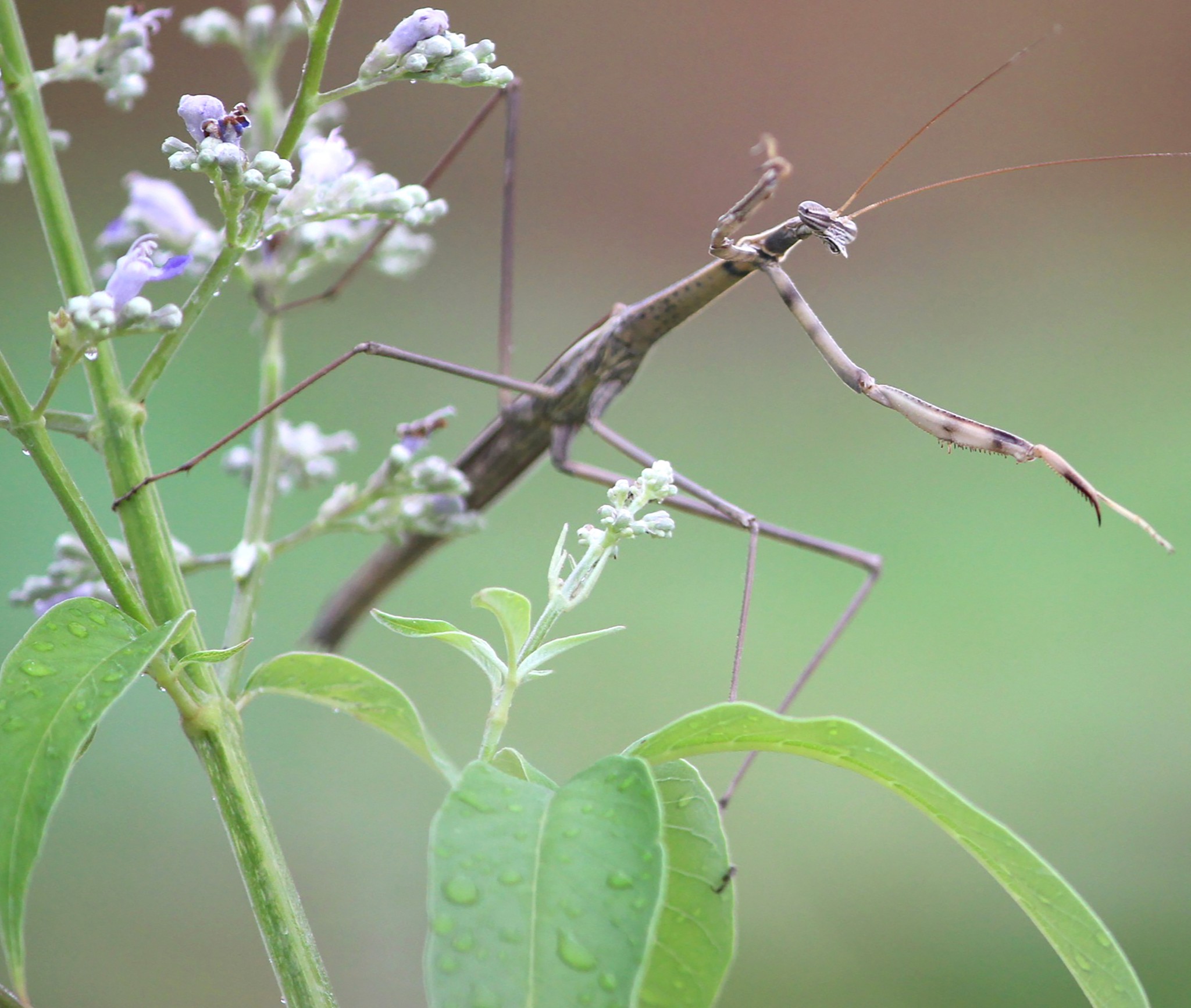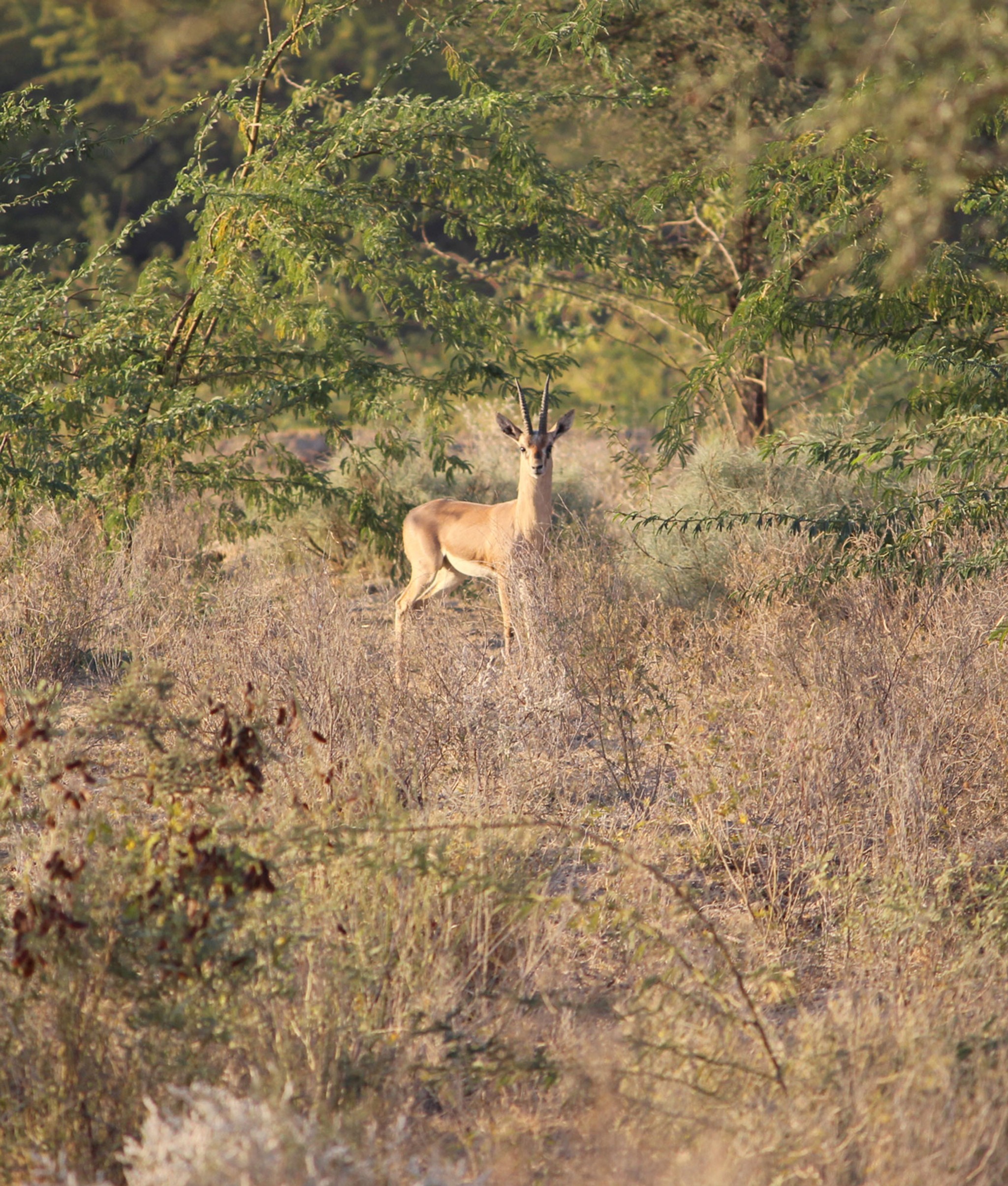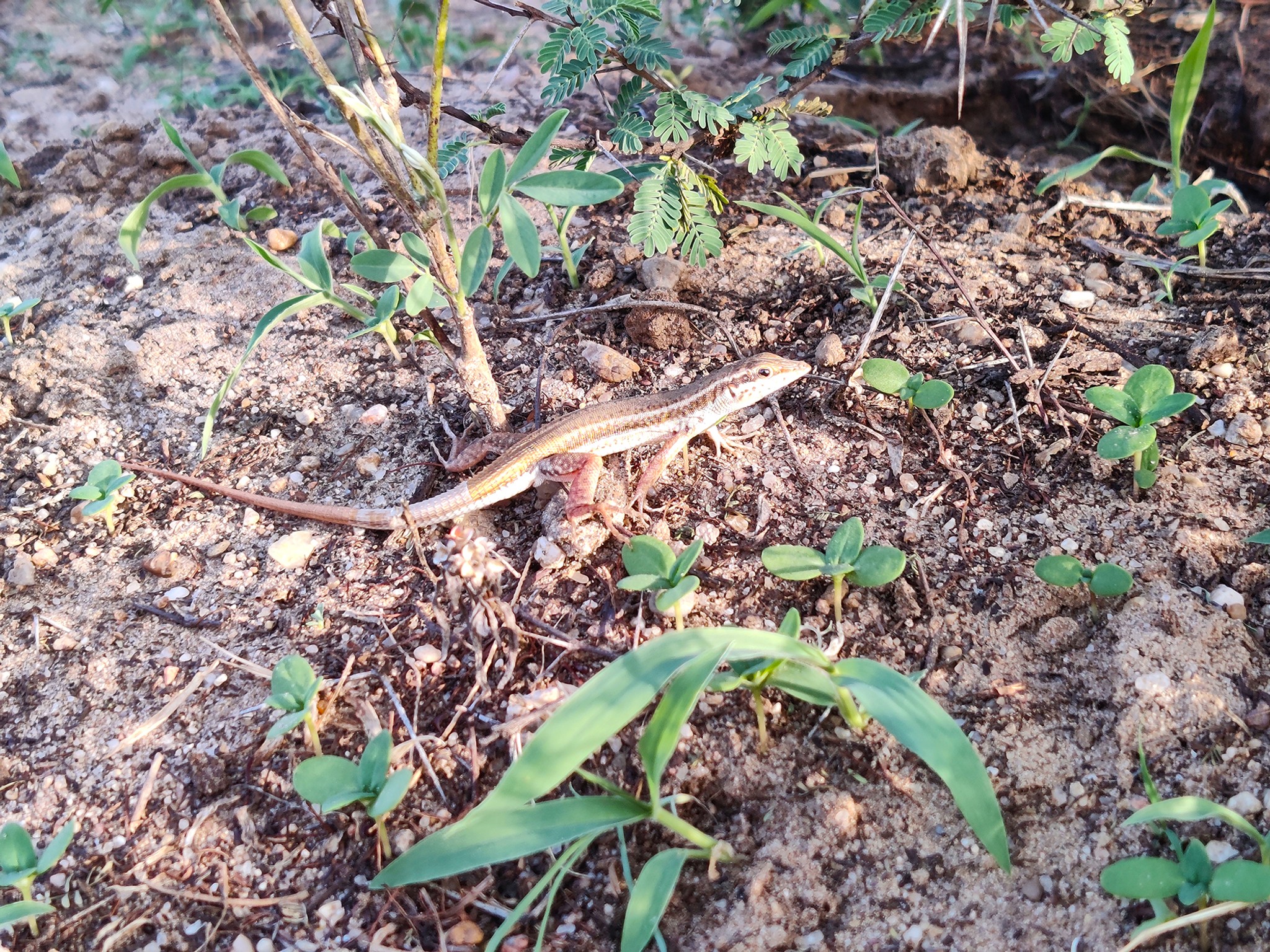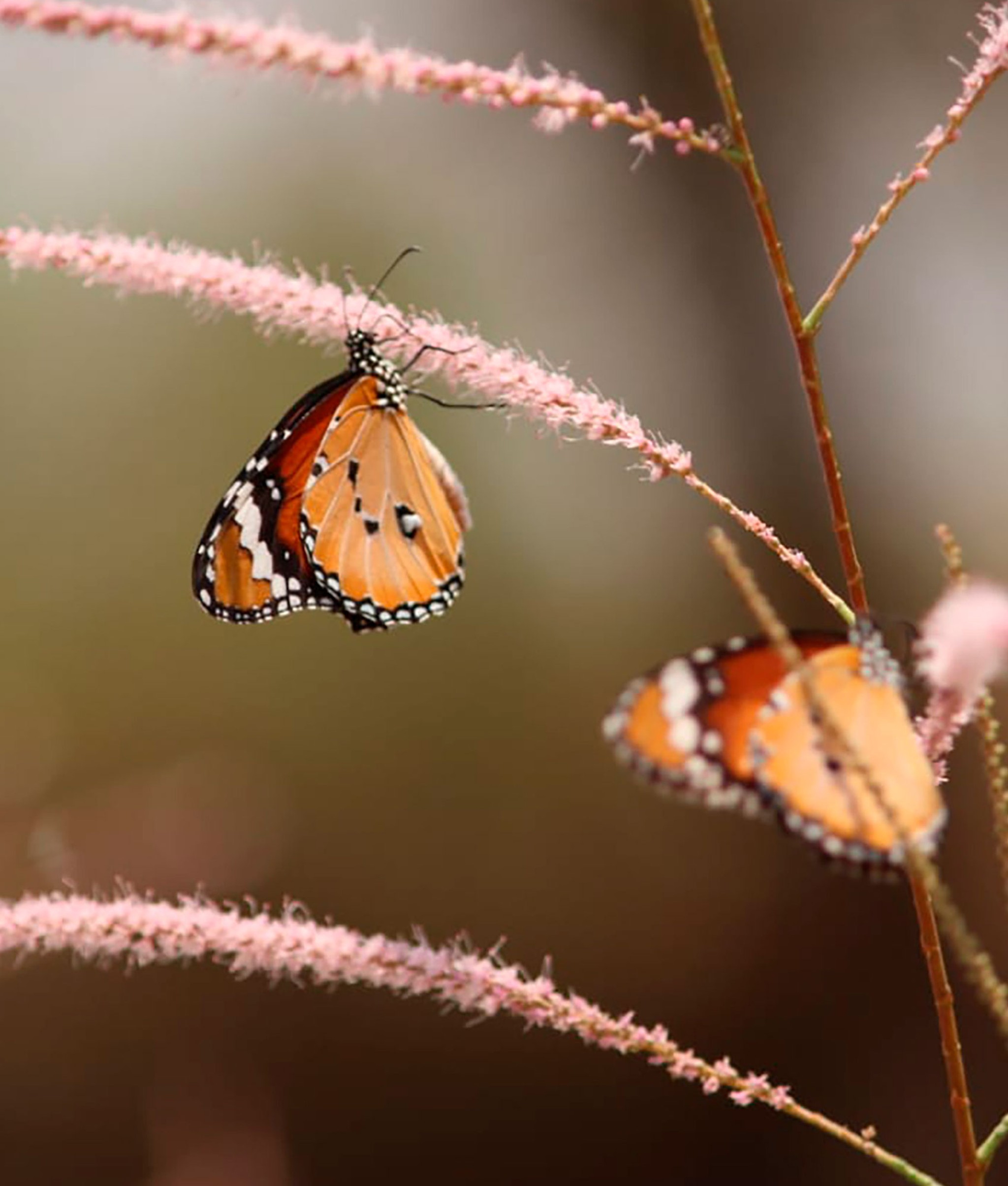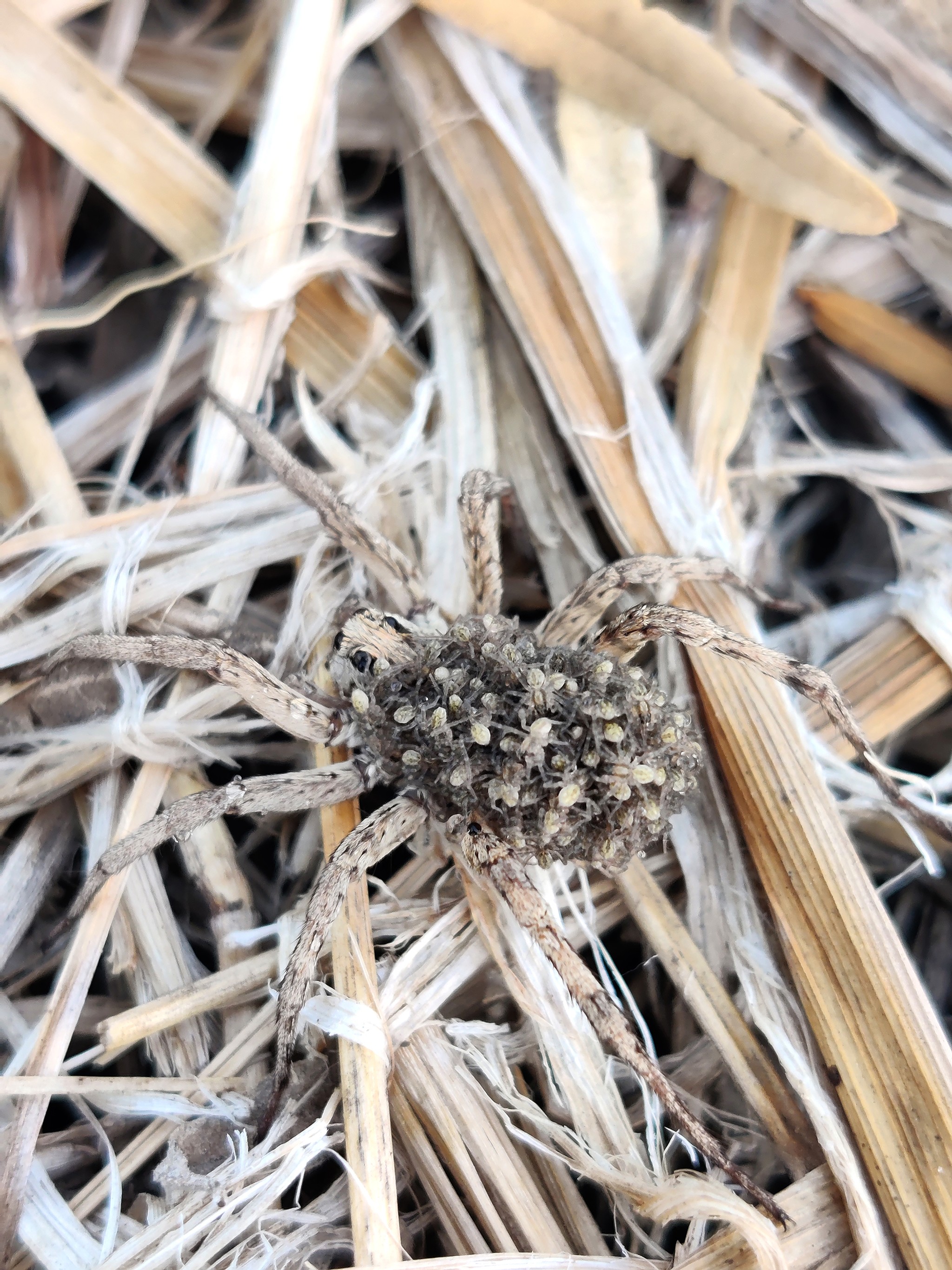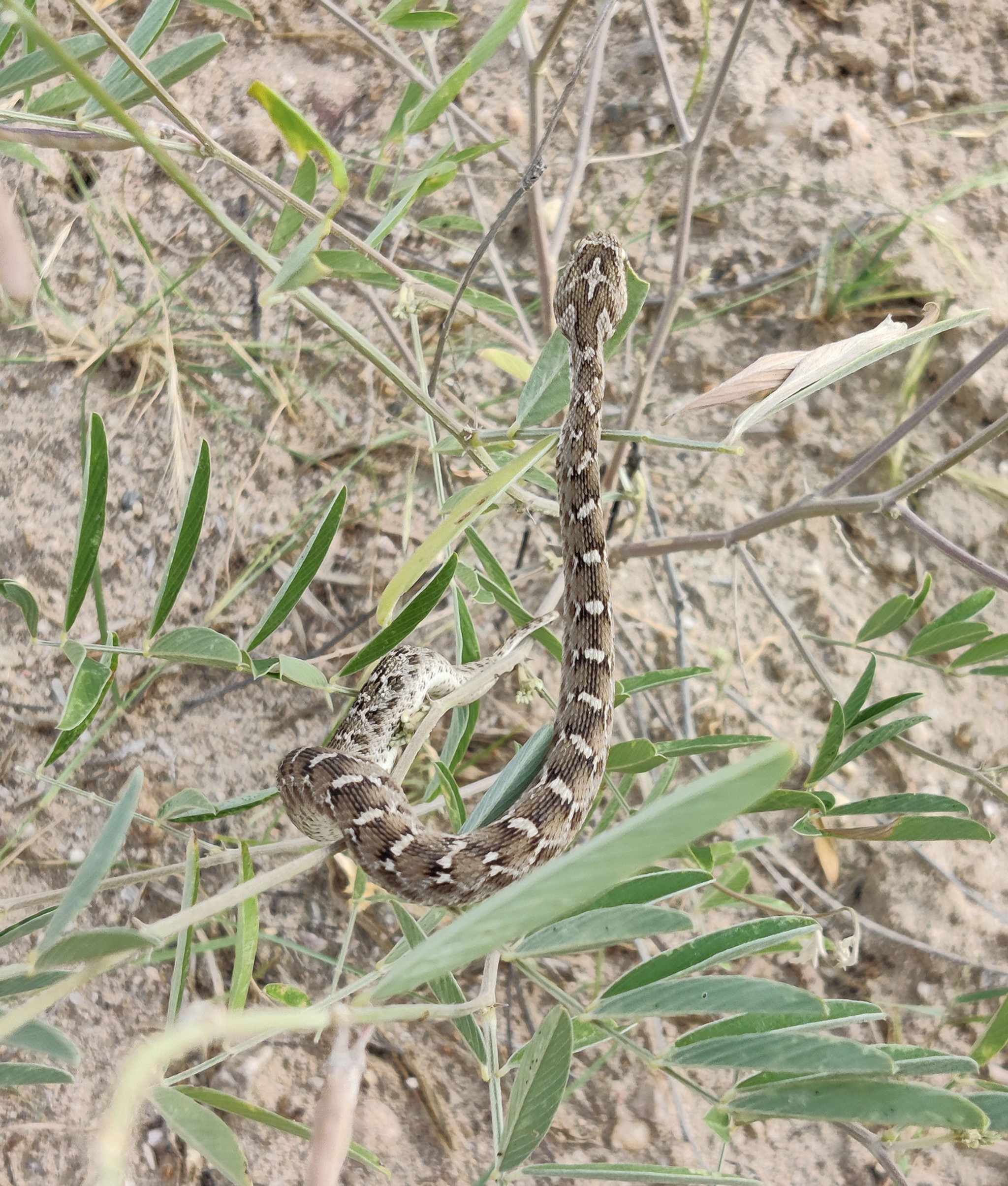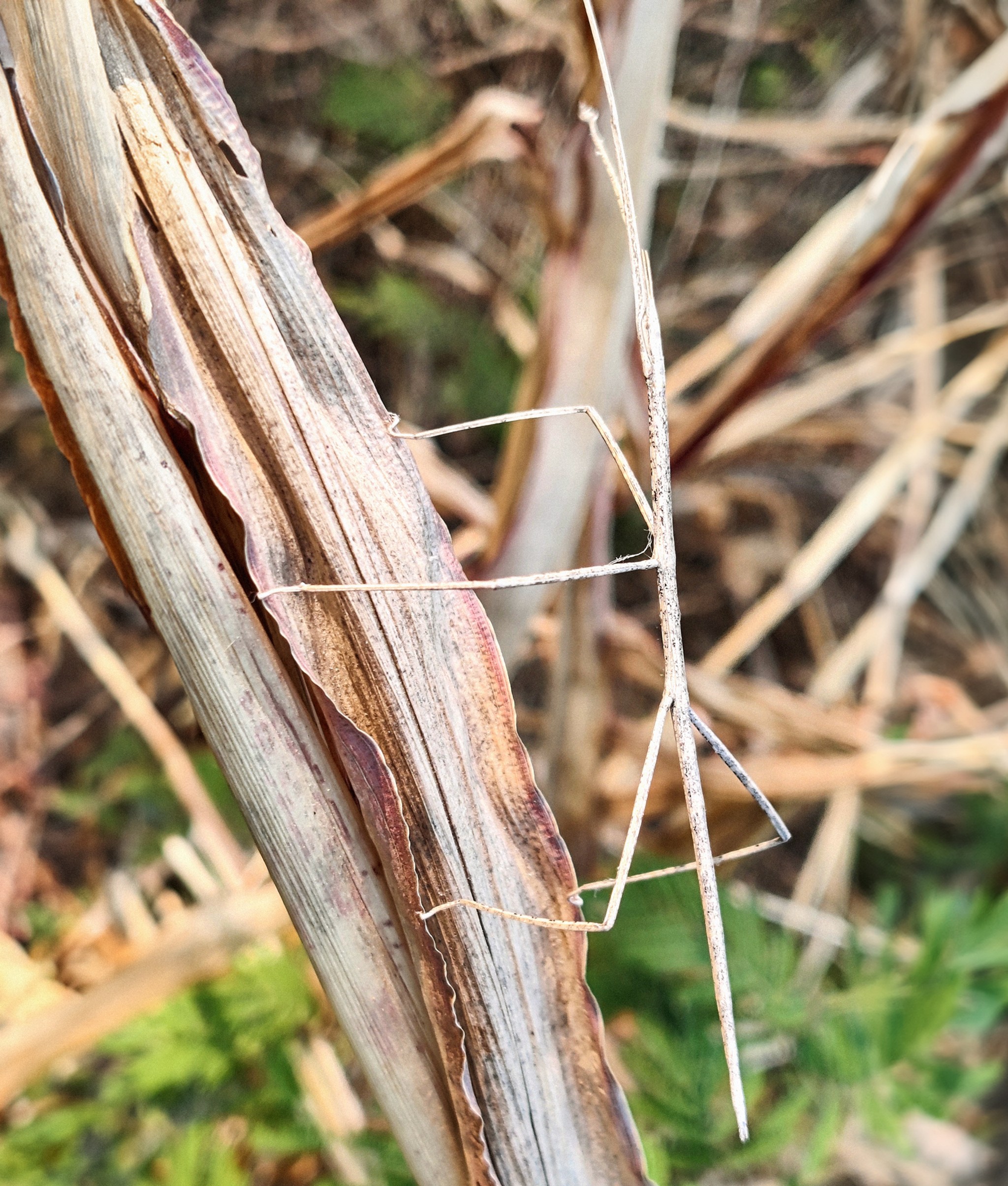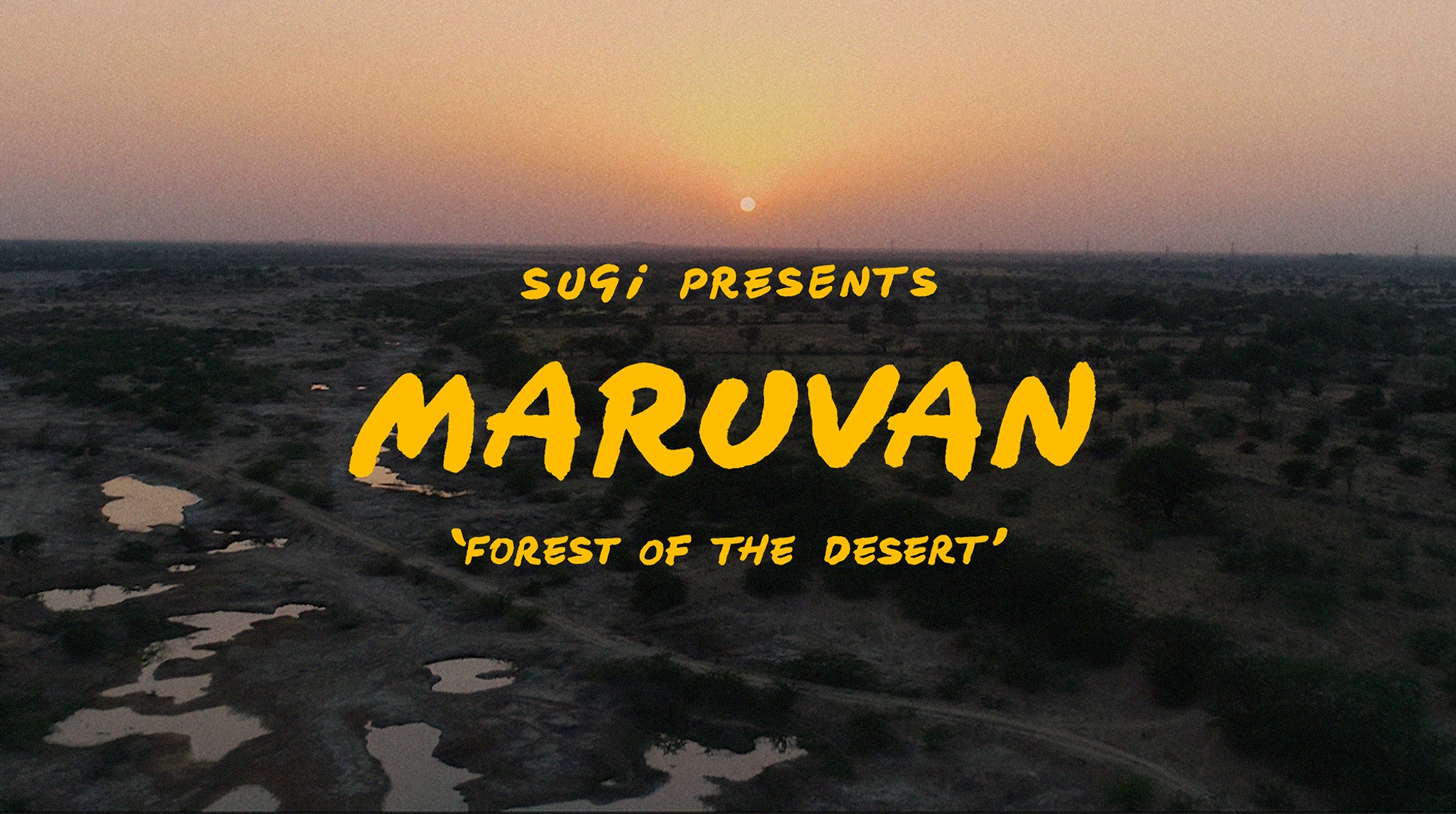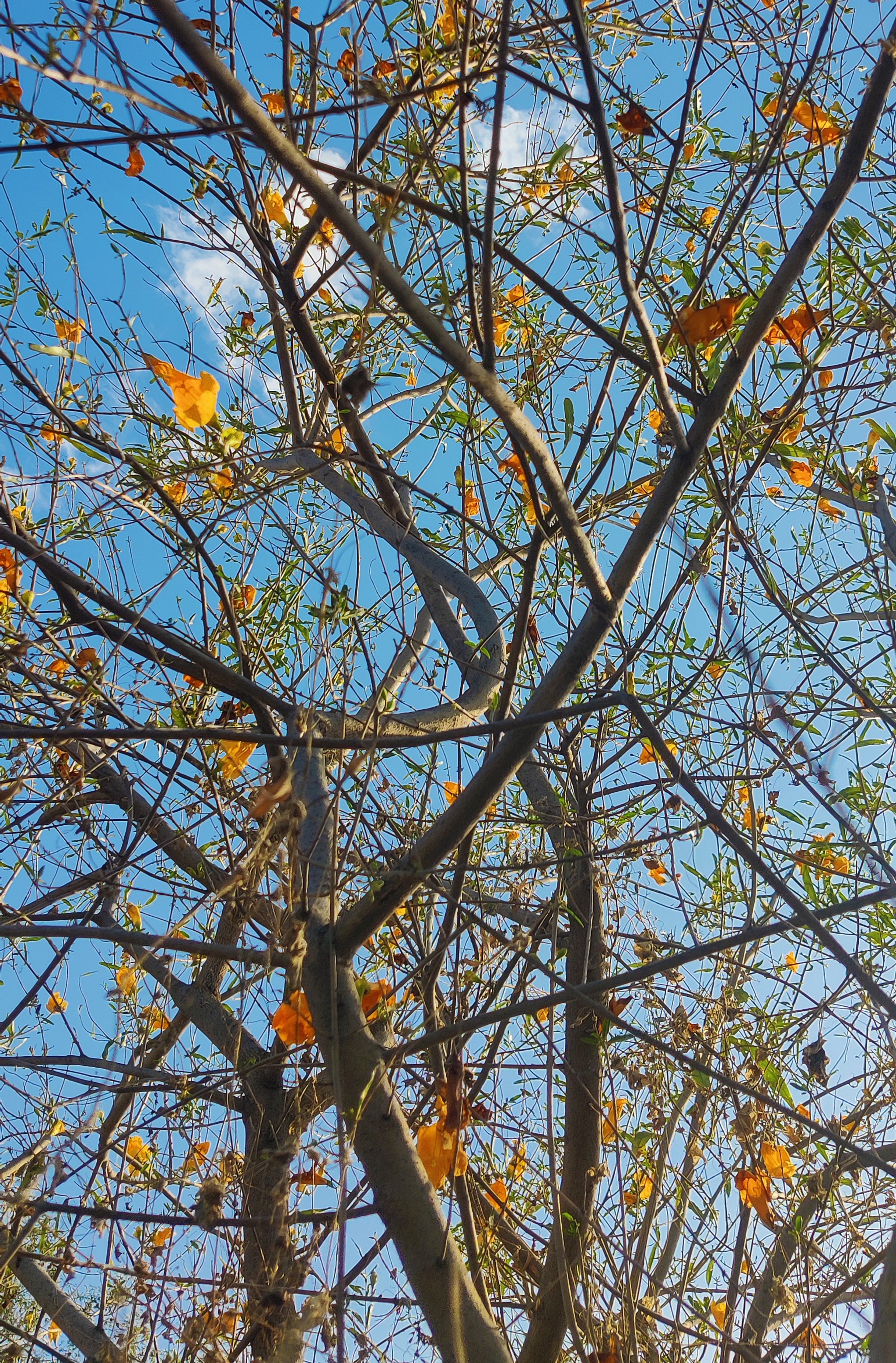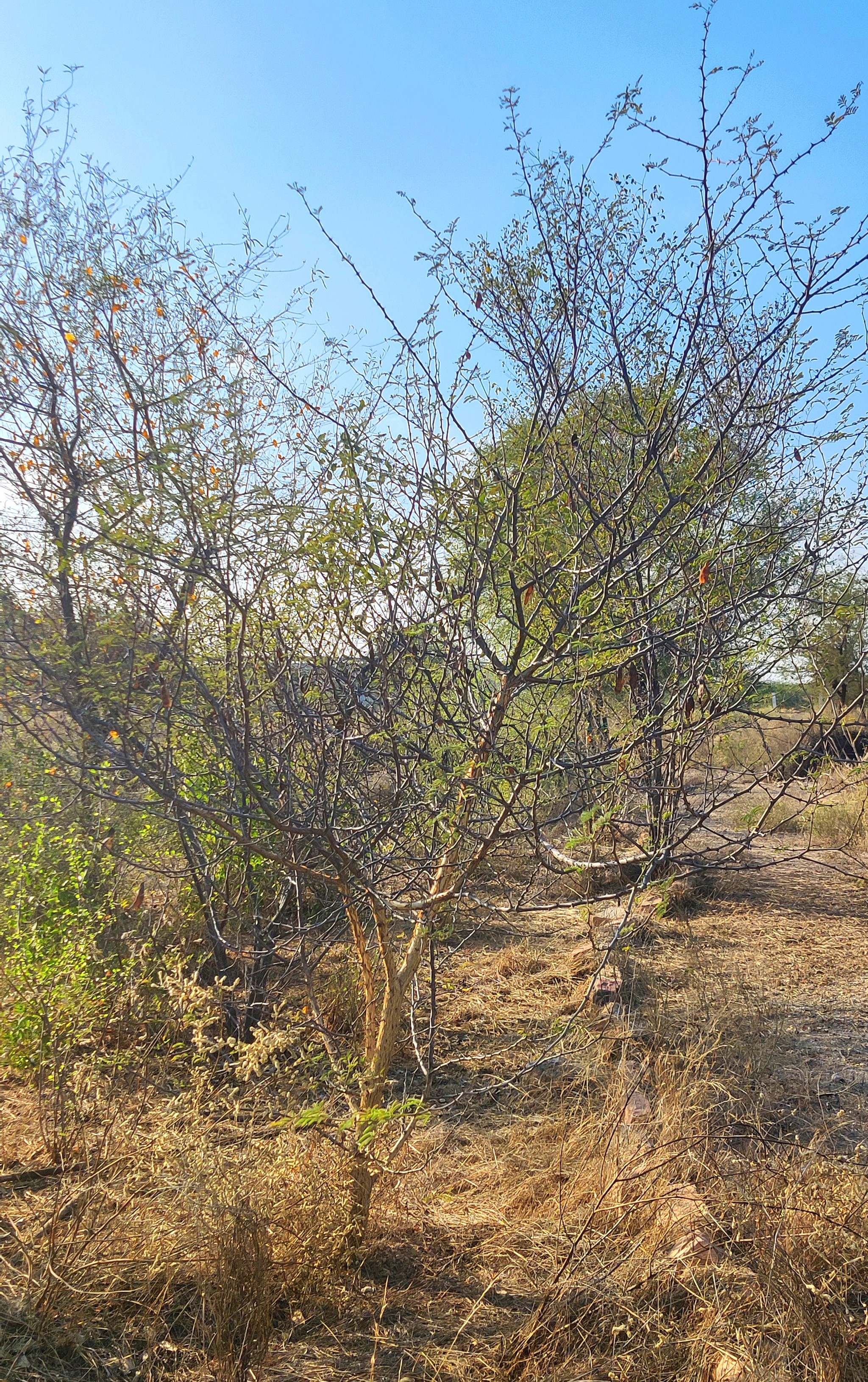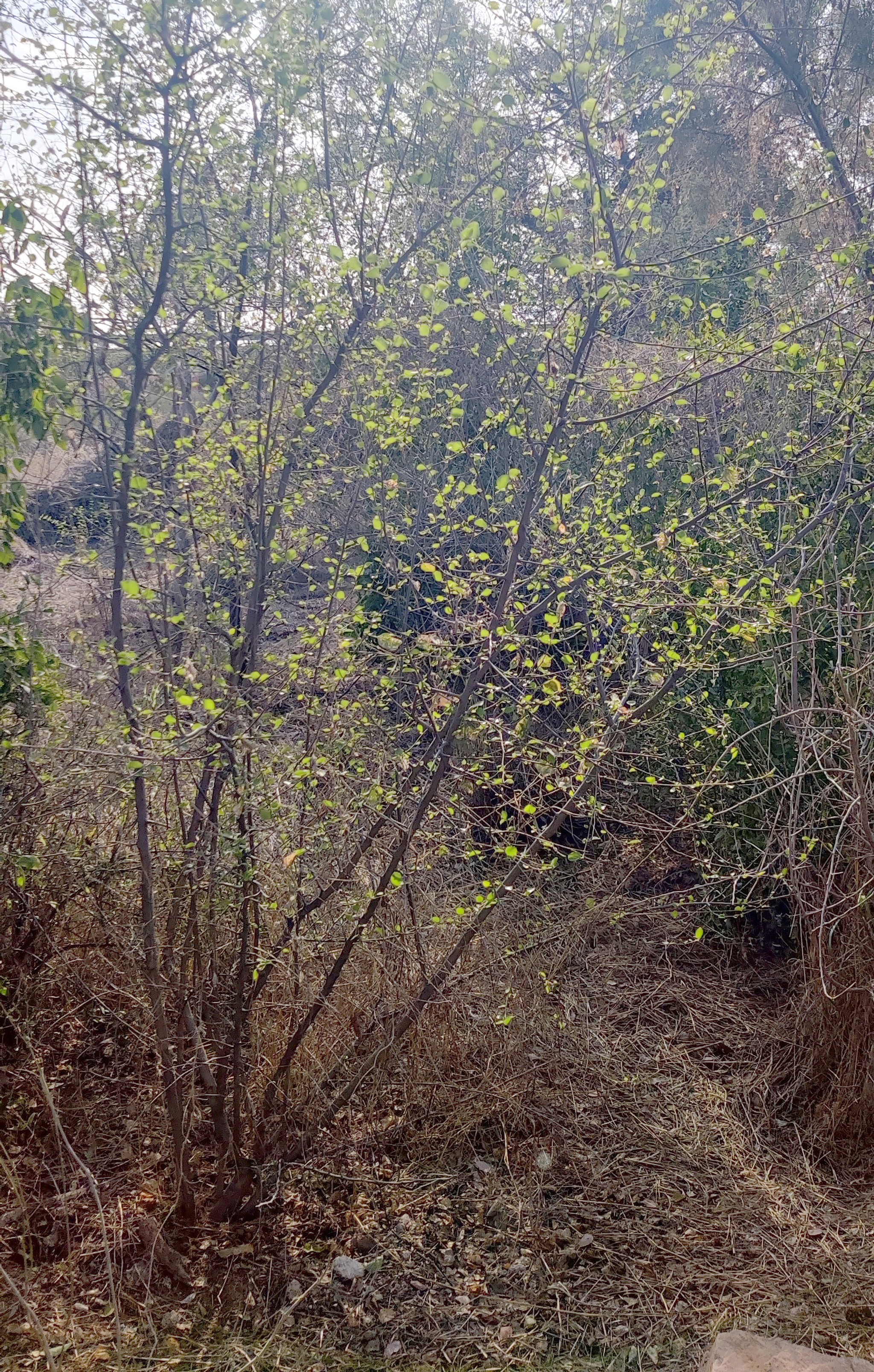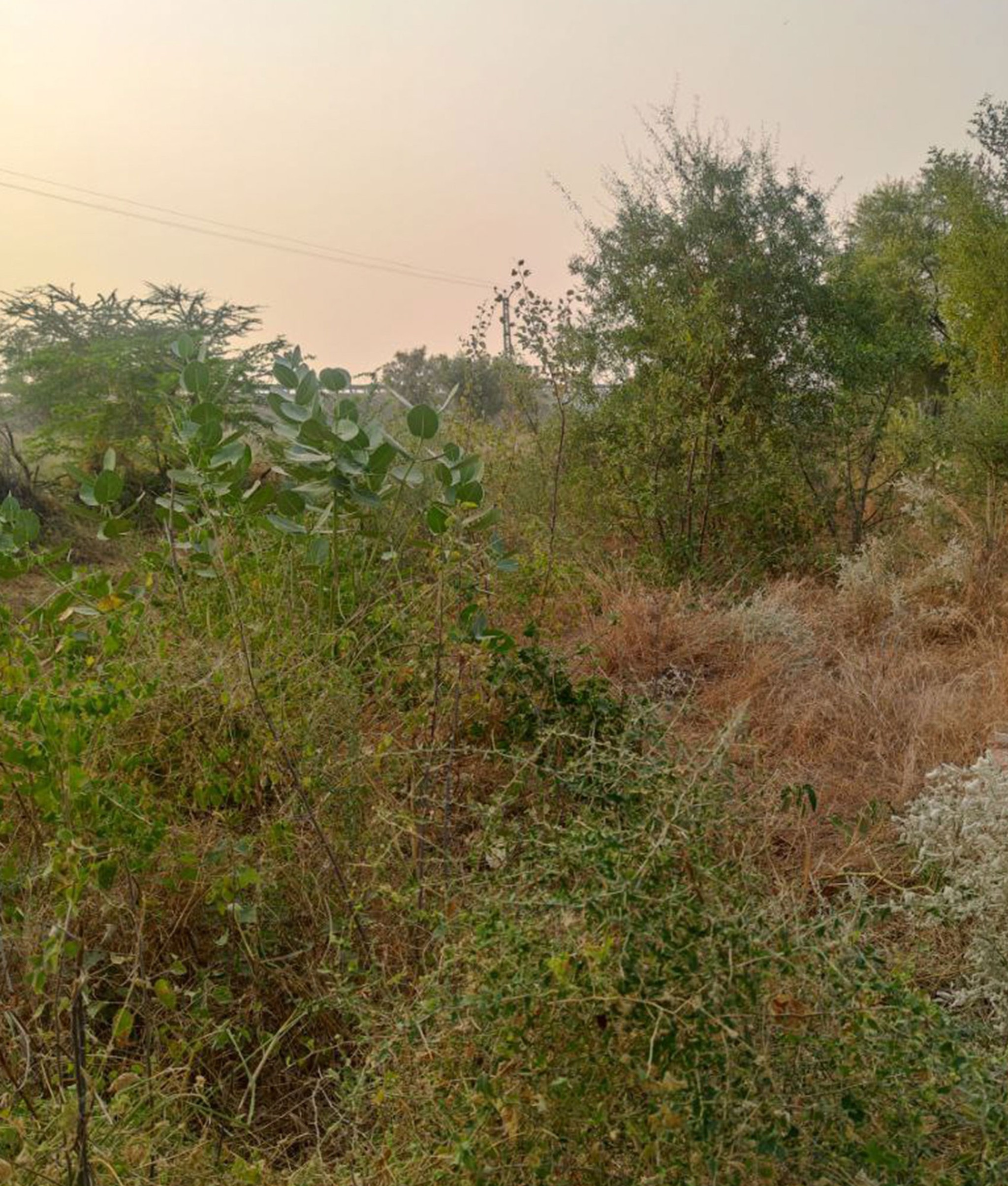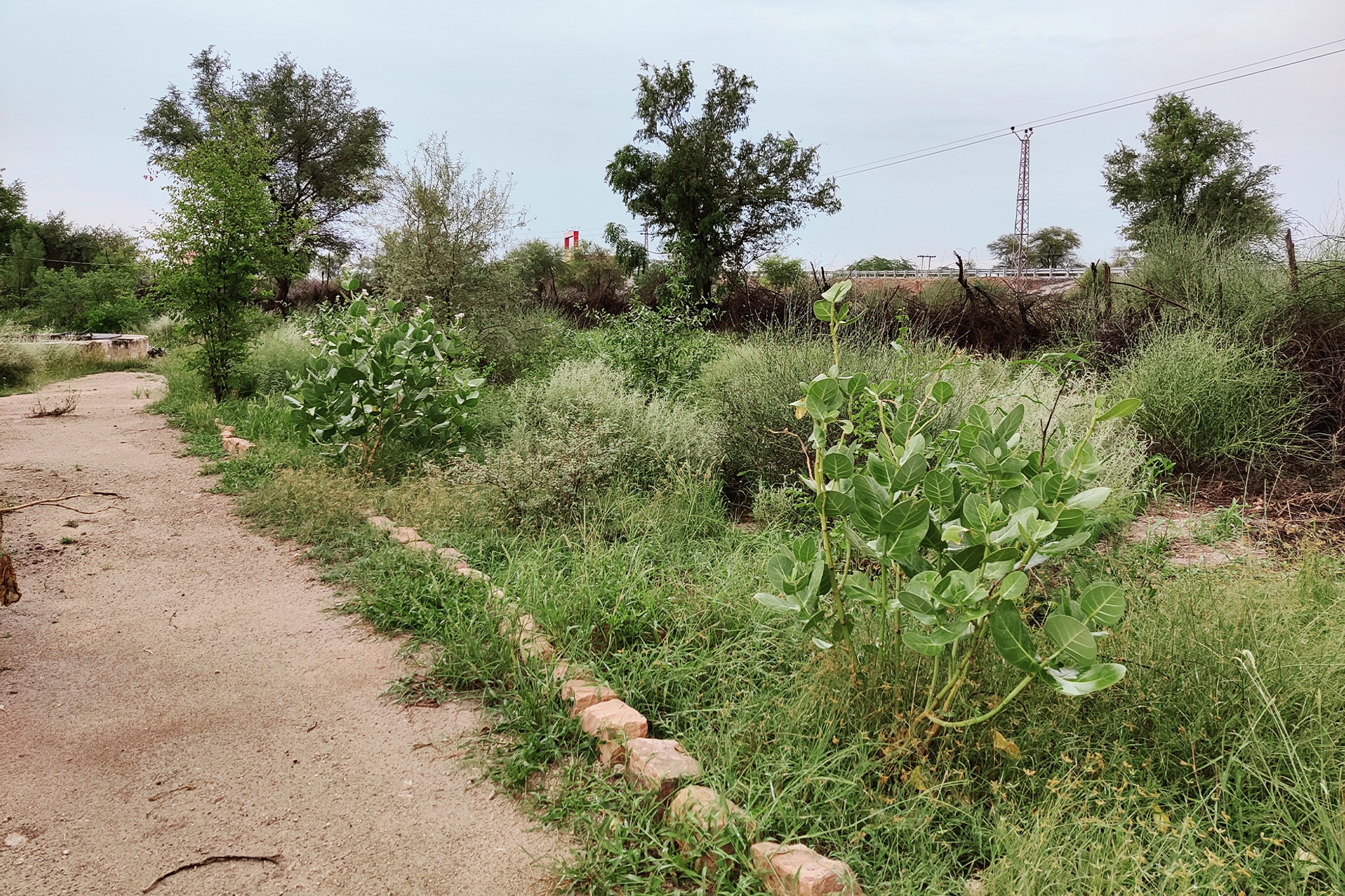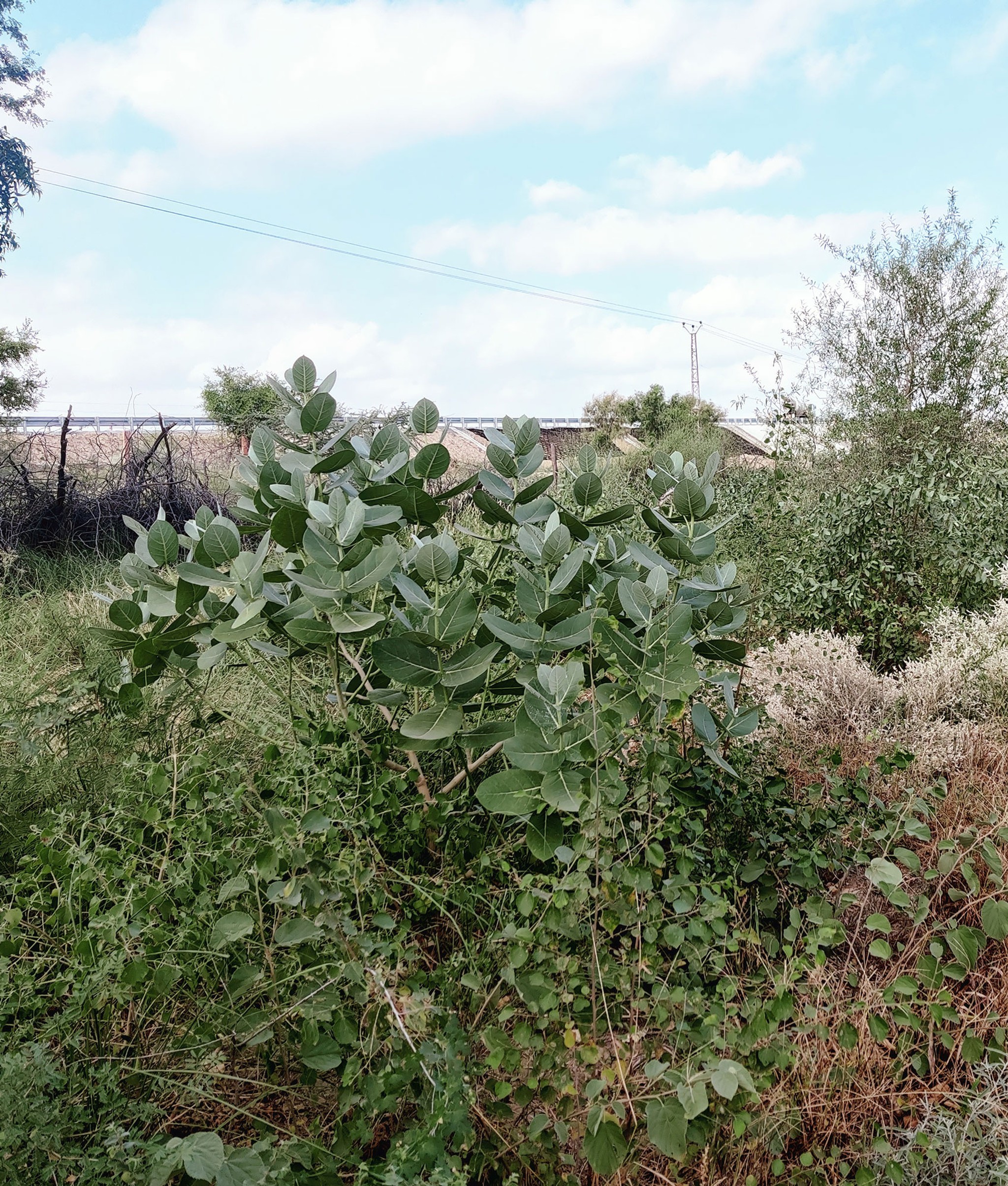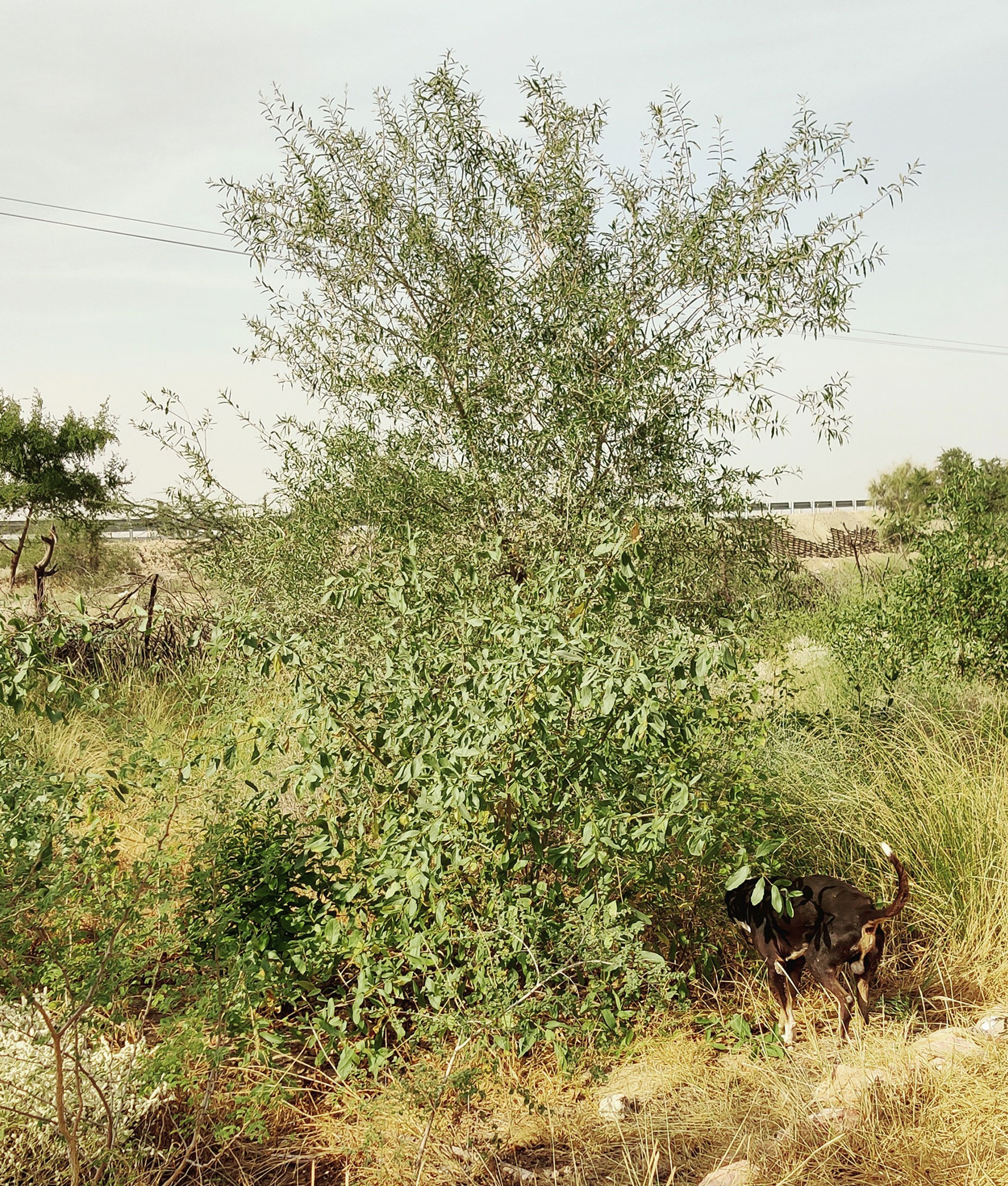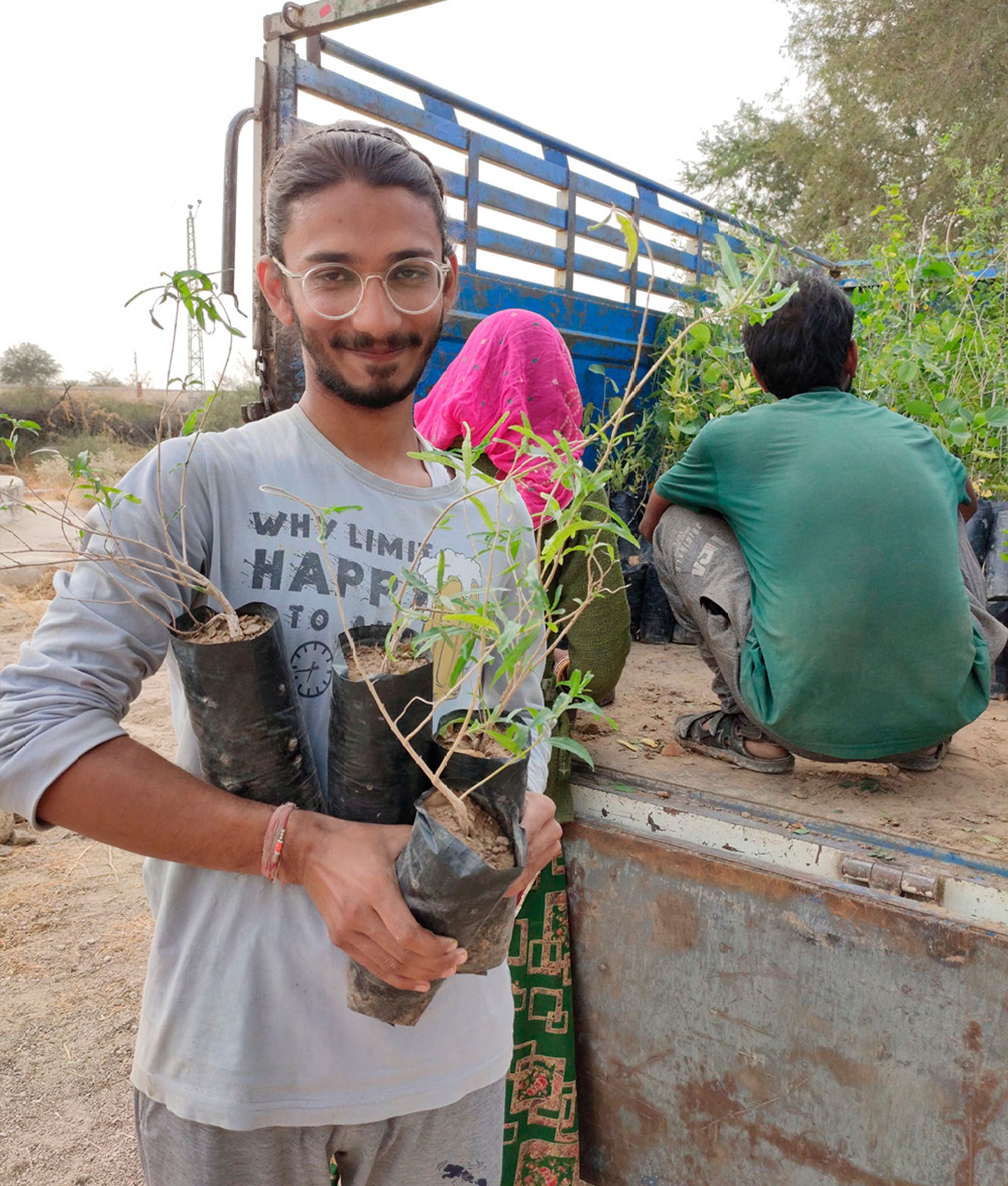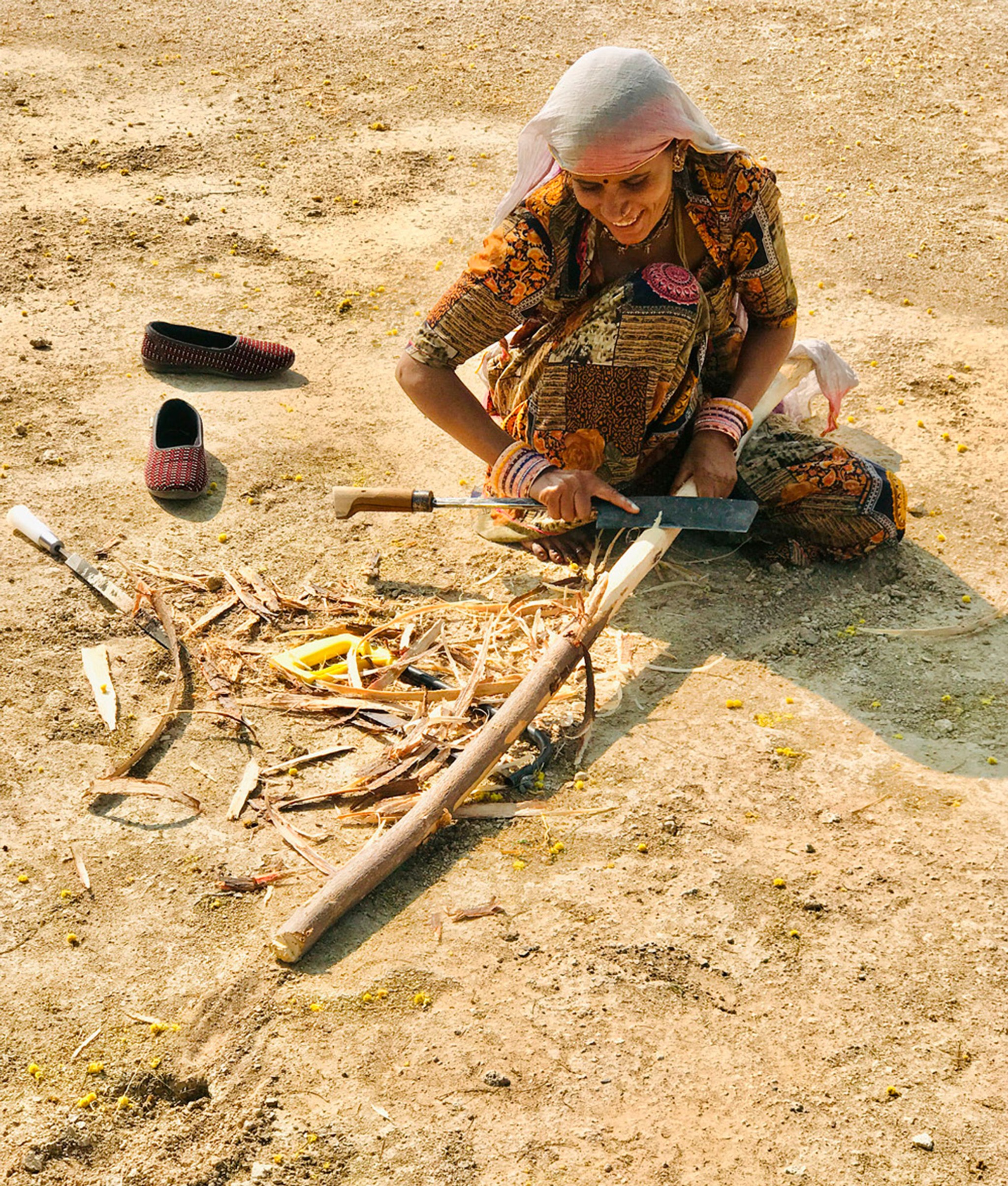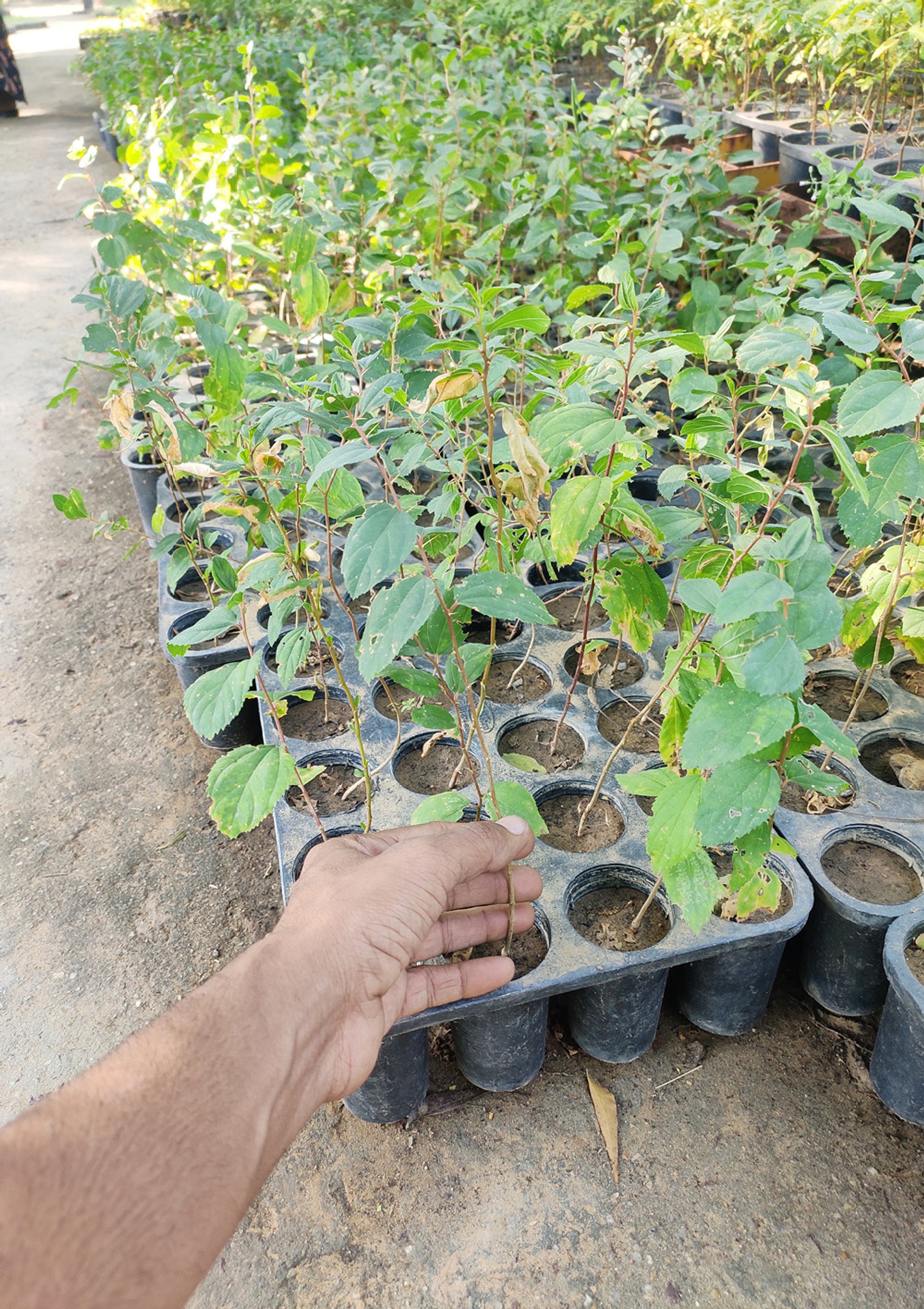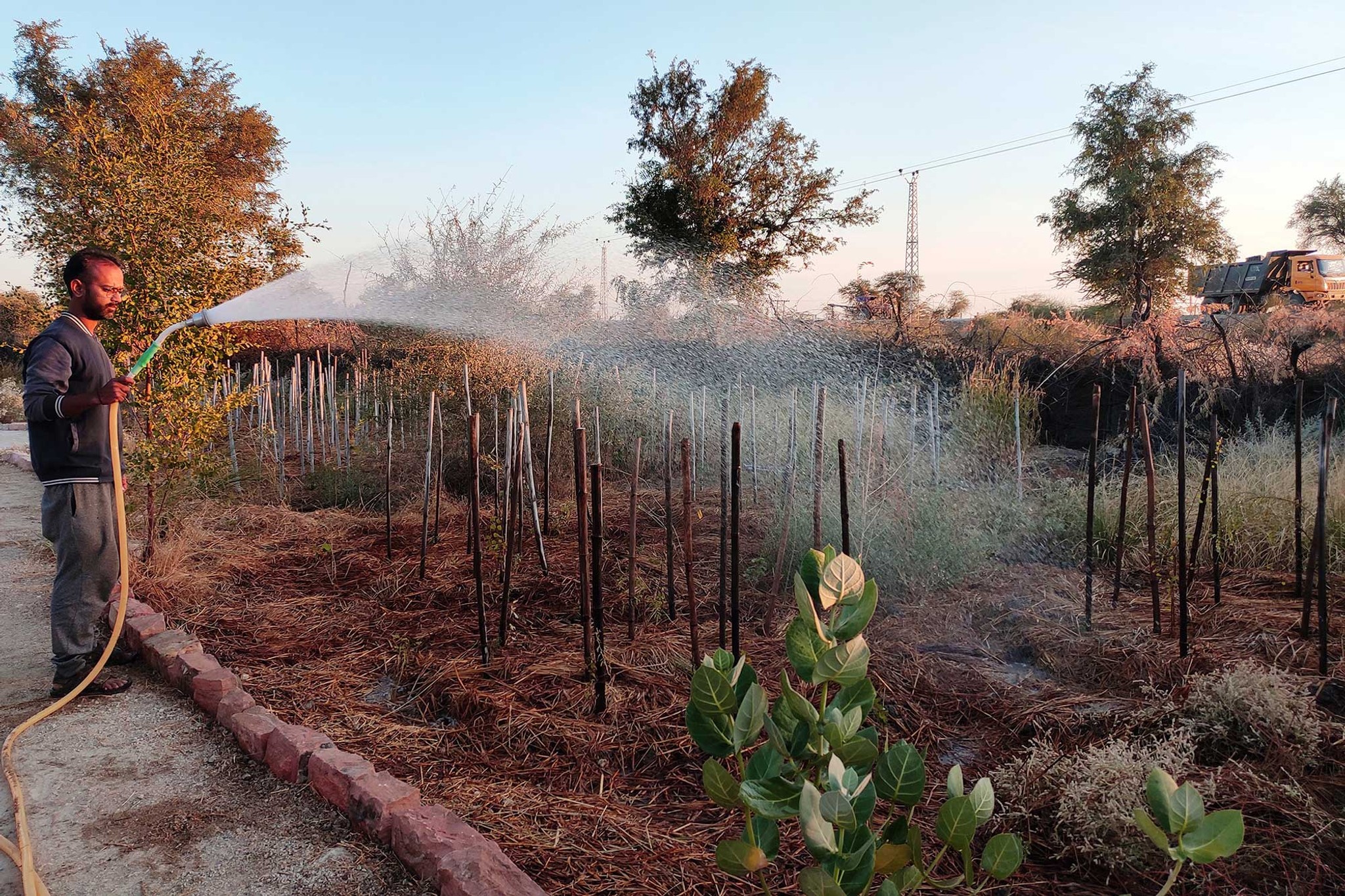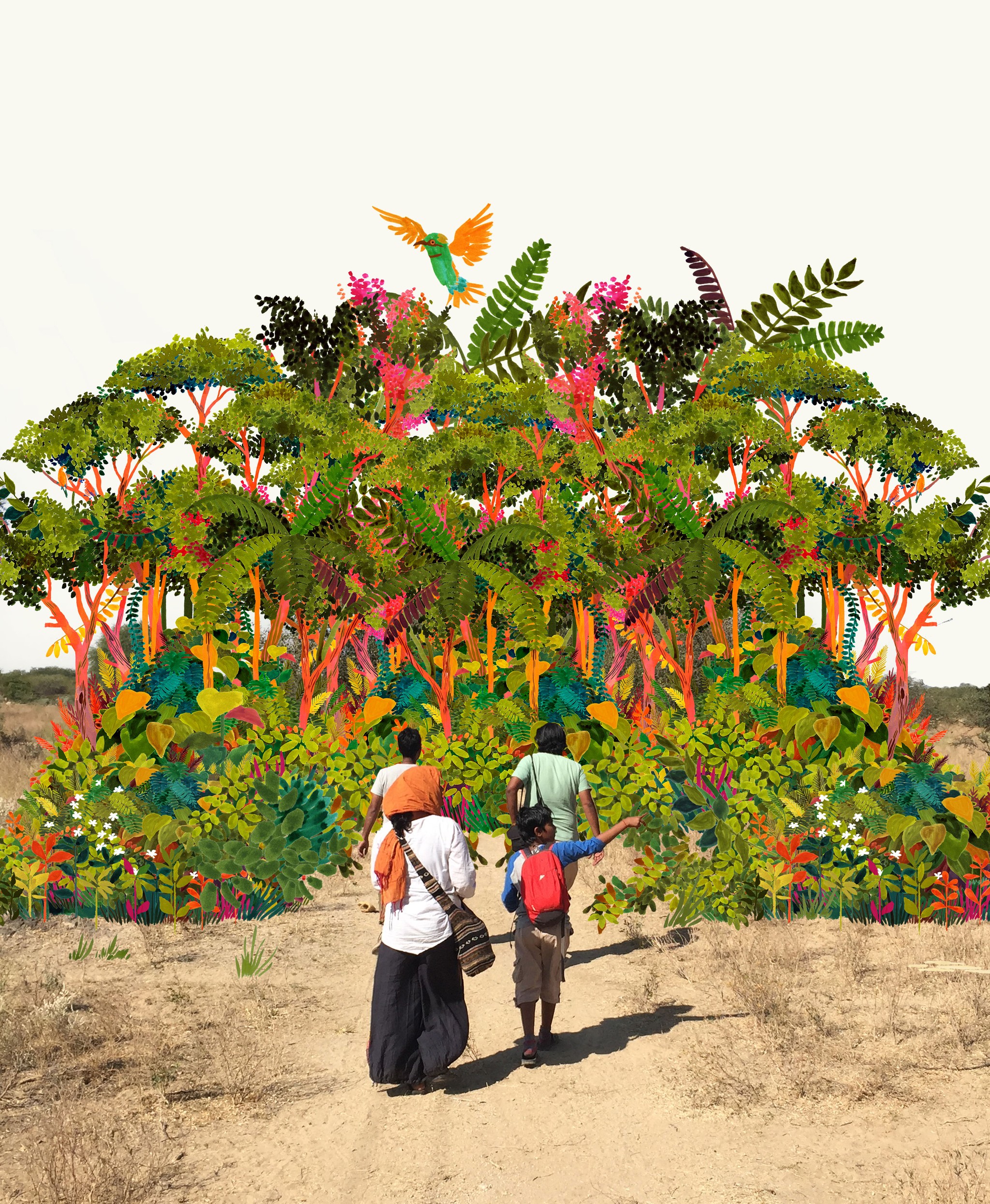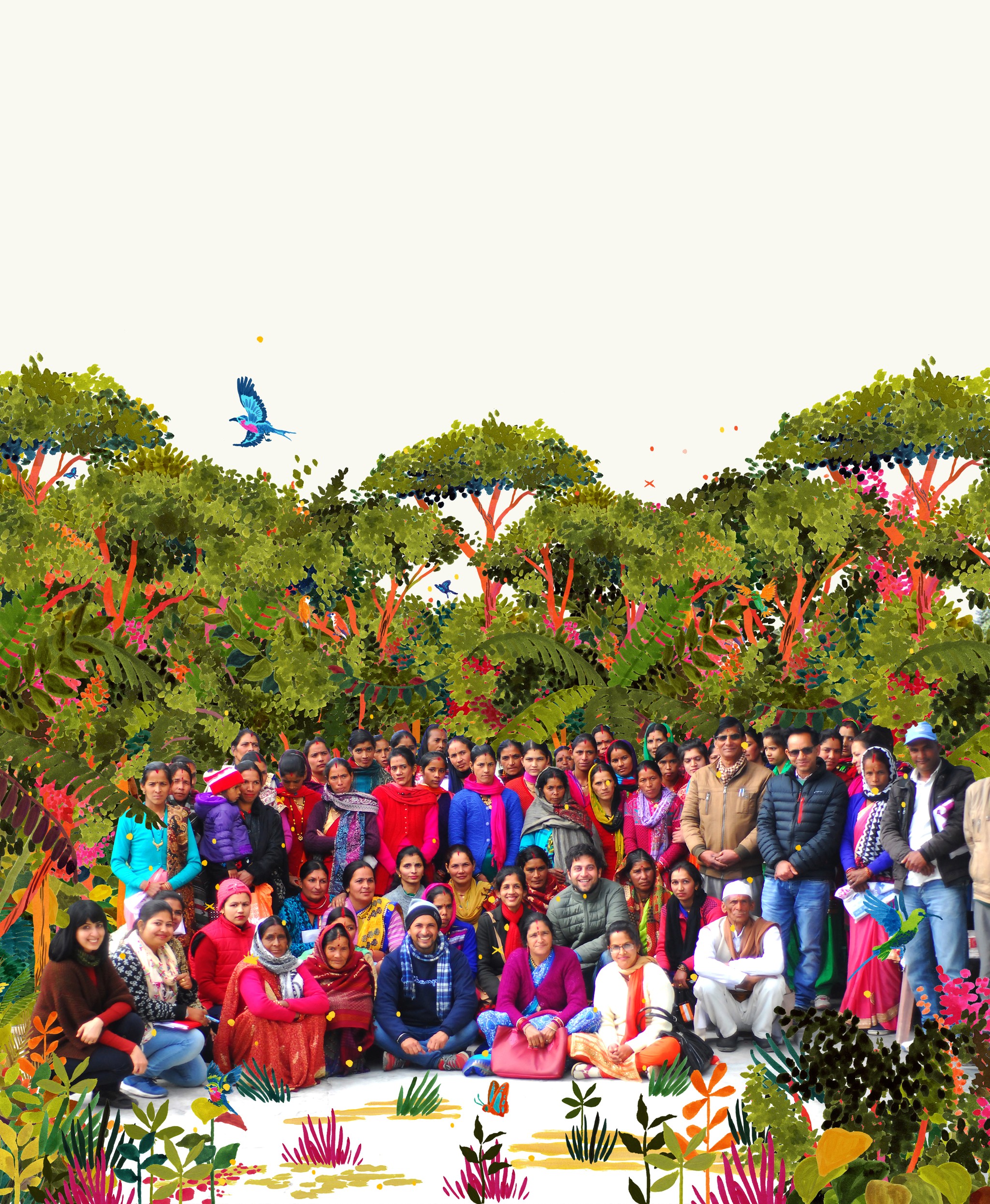Maruvan
Reviving India’s lost desert forest.

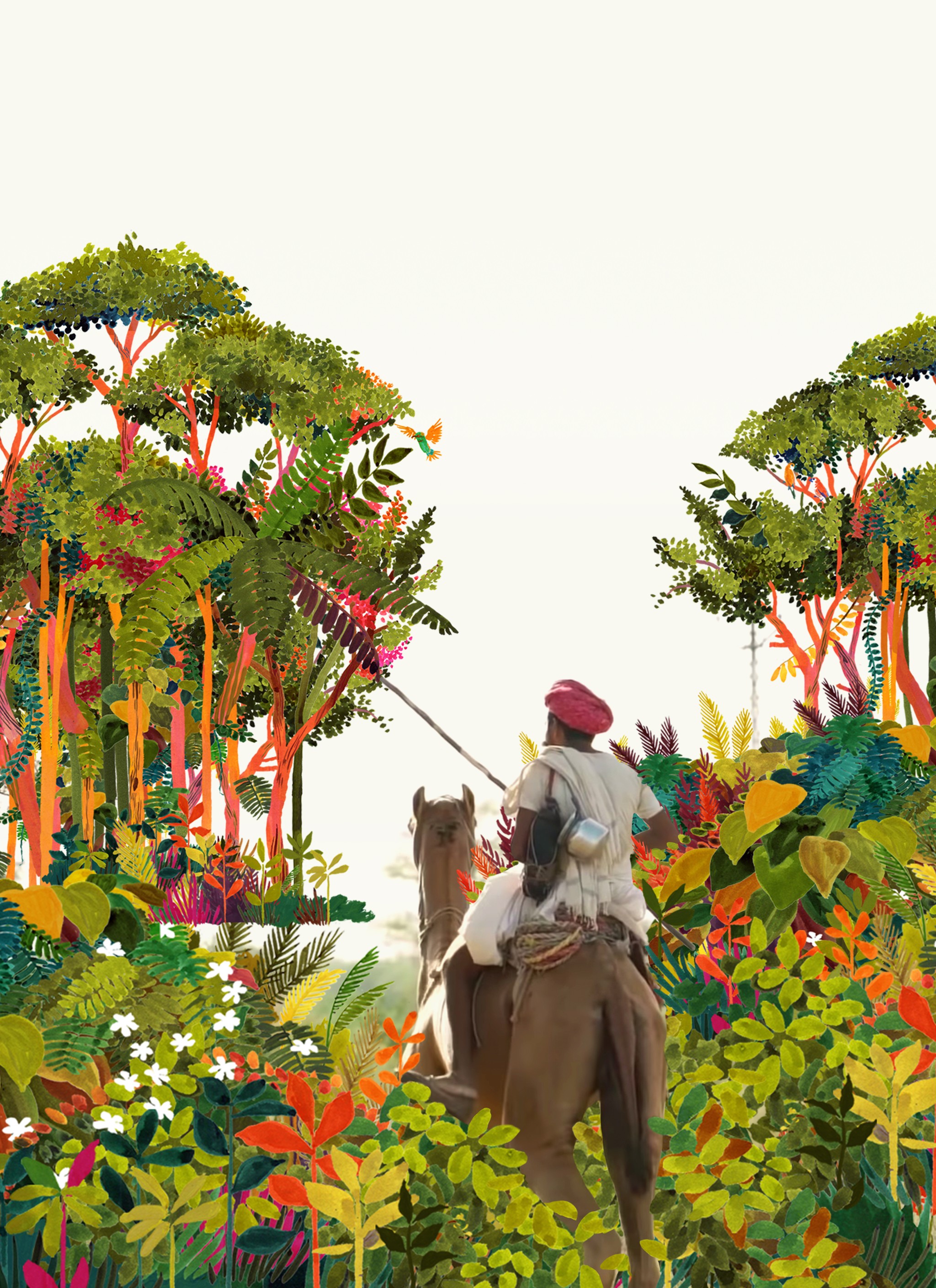
0
Trees
0
Square Meters
0
Native Species
Self Sustaining Forest
Planted in November 2020 as part of the Luni River Basin restoration in Rajasthan, Maruvan has quickly developed into a thriving, self-sustaining ecosystem that mirrors the region’s natural guilds. The transformation is striking - indigenous plants like acacia, ber, and babul are flourishing in the harsh desert climate. We have also observed the return of species like kharshan (Crotolaria burhia), khimp (Leptadenia pyrotechnica), and kapok bush (Aerva javanica) along with other associated species, further underscoring the success of the restoration efforts. Additionally, the removal of invasive non-native species has allowed native plant associations to reestablish, enhancing the forest's resilience.
The 25-feet deep step well, built in 2021, continues to provide potable water year-round, becoming a vital water resource for the surrounding ecosystem. It has attracted a variety of wildlife to the forest, including species such as nilgai, or “blue bull” (Boselaphus tragocamelus) and desert foxes (Vulpus vulpus pusilla) - a promising sign of the ecosystem's revitalization and recovery.
Community members are deeply encouraged by these positive changes, and the collaboration between Nature and local people has proven to be a powerful force in revitalizing the region. By blending art, traditional wisdom, design, and ecology, this initiative has brought about a new equilibrium - a resilient, dynamic ecosystem that heals the land and creates a nurturing space for future generations to learn and thrive.
Forest Maker
Gaurav Gurjar
Forest Partner




Ecosystem Restored
Final report: 21.11.2024
After approximately three years our SUGi Pocket Forests become self-sustaining. They no longer require human maintenance or watering, and can be handed over to Nature for biodiversity and complexity to naturally develop.
0%
Survival Rate
0
People living within 300 meters
0
kg of potential CO2 sequestration
Biodiversity
Biodiversity is all the different kinds of life you'll find in one area—the variety of animals, plants, fungi, and even microorganisms like bacteria that make up our natural world. Each of these species and organisms work together in ecosystems, like an intricate web, to maintain balance and support life.
0
Potential number of mammals
0
Potential number of birds
0
Potential number of amphibians
Urban Heat Profile
The Urban Heat Island Effect is affecting cities more and more each year and temperetures in urban areas can go up to 12 degrees hotter. This can be reduced and prevented by planting urban forests like this. We collected the air temperatures on a hot day in October at Maruvan and saw amazing results.
0°C
Air Temperature Difference
0°C
Air Temperature Difference

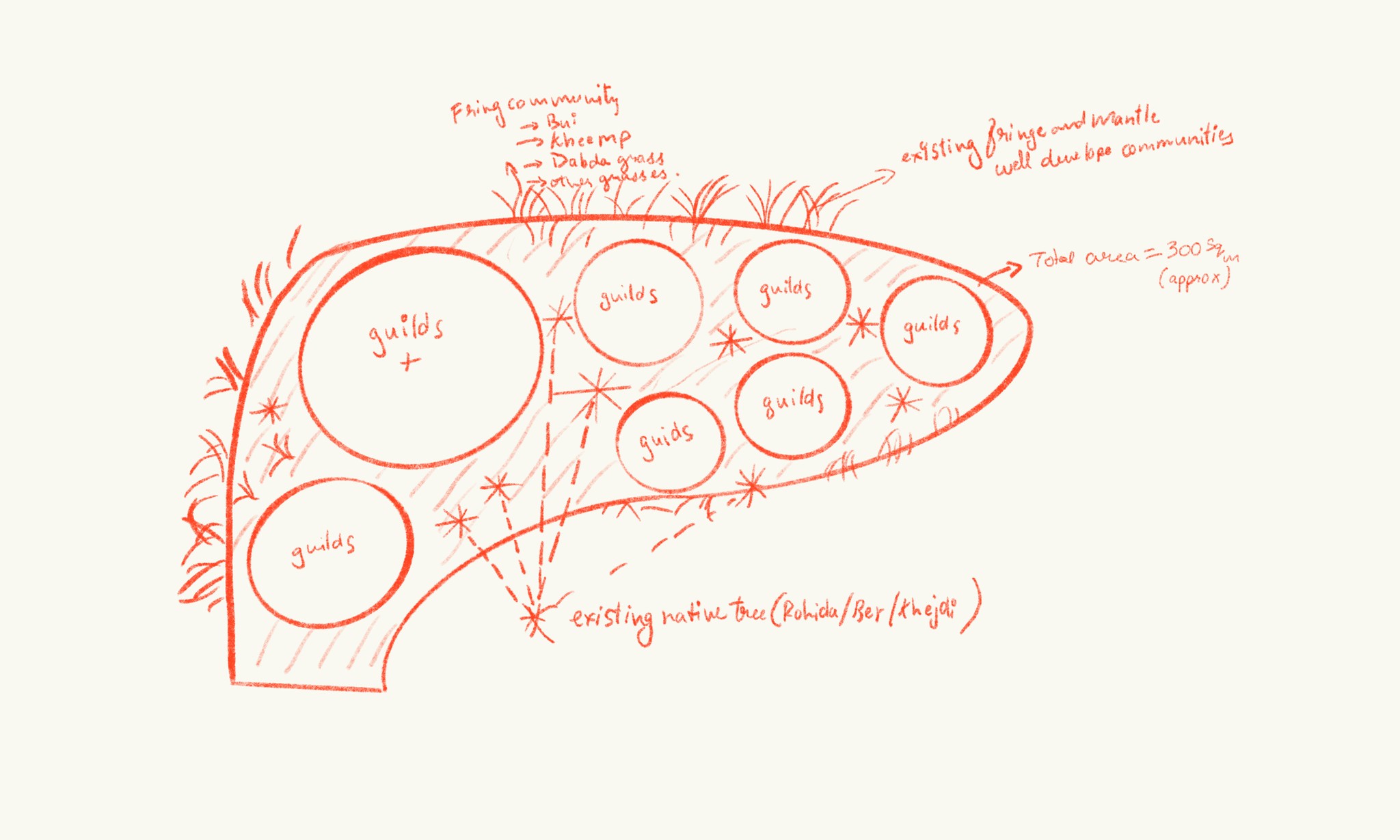
Forest Design
Maruvan (Maru + van) means ‘Forest of the Desert’
Our goal is to plant along the Meethadi river which has its point of origin on ‘Maruvan’ and runs for 80km.
Today, every time the river floods during monsoons, it expands tremendously! Trees along the riverbank will avoid erosion. Our attempt will be to convert the Meethadi river from a seasonal (flows only during the Monsoons) to perianal (flows whole year) river.
“Maruvan will be a destination for anyone in India who is researching native trees, seeds as well as techniques for reforestation on arid terrain.”
Shubhendu Sharma, SUGi Forest Maker
Forest Report: 2023
0 Years
Forest Age
0%
Survival Rate
0m
Average of Tallest 3 Trees
As this forest is in the middle of the desert - an extremely degraded landscape - wildlife and fauna of the region love to find shelter here. In the past two years, we have stopped repairing fences and have allowed wild animals, such as deer, blue bulls and wild boars to come into the forest, although we do not allow domesticated animals such as cows, goats, sheep and buffalo.
In the last 3 years, we have seen an increase in the number of species living in the forest. Currently, the forest is self-sustaining and can shelter many species. With fauna coming to the forest, they have started to bring in new species of flora, and new grasses (fringe species) are being introduced which were not even found in nearby areas.
New learnings include that the forest pattern and guilds are being stabilised and new plant associations are being observed, which is helping us improve our new plantations.
The quality of our open well water has drastically increased as water gets filtered from the roots of the forest before accumulating in the well. Many people are visiting us to learn about how to get similar things done in their space where both water and landscapes in saline are degraded.
Biodiversity Notes:
Biodiversity is increasing. This forest was twice grazed by Nilgai (Boselaphus tragocamelus) - the largest Asian antelope - due to lack of food in surrounding areas, which resulted in a slightly reduced average height of forest than expected. However, the forest has reached a stage where it can bounce back from such stresses on its own and mortality won’t be an issue now.
The forest will probably reach a stage next year where it will start producing flowers and seeds as seedlings. As such, more biodiversity will be attracted such as birds, insects etc.
We also observe that there are many new native fringe and mantle species being brought into the forest which we were not able to procure due to lack of availability. These species are establishing themselves.
Observed animals include species of snake, 16 species of bird and several types of pollinators, such as bees, wasps, and various butterflies. We continue to observe species including the porcupine (Hystrix indica), hedgehogs (Paraechinus micropus), desert fox (Vulpes vulpes pusilla), mongoose (Urva edwardsii), wild desert hare (Lepus nigricollis) and the desert gerbil (Meriones hurrianae).
Forest Report: 2022
0 Years
Forest Age
0%
Survival Rate
0m
Tallest Tree
The tallest seedling is currently a Boraginaceae (Cordia sinensis). The smallest is the Rohida tree (Tecomella undulata) at 35cm.
We finally had amazing rains this year after a prolonged drought of 2 years. Maruvan is doing great, and we haven’t watered it for the last 5 months. It is able to retain moisture in the soil and is forming its own mulch by shedding its leaves and grasses turning brown in stress seasons. Owing to good rains this year, our ponds are full and the water level in our open well has risen, increasing the moisture level of the entire forest area. It seems this forest won’t need water from now on and is already self-reliant.
“In the last one year, we have learned that with just a little positive human intervention, nature bounces back at an exponential rate. This is a great example of how land devastated can be brought back to its natural equilibrium and restored to its natural glory.”
Gaurav Gurjar
Forest Report: 2021
0 Months
Forest Age
0%
Survival Rate
0cm
Tallest Tree
The tallest seedling is currently a Boraginaceae (Cordia sinensis) reaching 198cm. The smallest is the Rohida tree (Tecomella undulata) at 30cm. The average height of the forest is 90cm.
We were hoping for good monsoons this year (2021) as last year was drought. However, this year it was an even bigger drought than last year with almost no rains at all in our region. All our ponds and open wells ran dry and there was an acute shortage of water. Despite that this forest is doing great and has seen less mortality compared to other patches we did
in previous years.
The main reasons for this we think are the change in structure of forest we improvised by giving priorities to natural guilds, as well as using more hardy climax forest species for creating this forest. Also fringe and mantle zone which included grasses and perennial and annual herbs and shrubs around the guilds have been very functional in protecting the moisture in ground and creating micro habitats for inner guilds to do well.
Planting: November 2020

Why Maruvan
Rajasthan, the Desert State of India, has always been considered barren land. With this in mind, it has become one of the most ignored places for ecological restoration.
Due to overfarming, the common factors of degraded land and eroded topsoil are predominant. The time is now to revive the Thar Desert which has the potential of growing a forest.
Maruvan (Maru + van) means ‘Forest of the Desert’
Our goal is to plant along the Meethadi river which has its point of origin on ‘Maruvan’ and runs for 80km.
Today, every time the river floods during monsoons, it expands tremendously! Trees along the riverbank will avoid erosion. Our attempt will be to convert the Meethadi river from a seasonal (flows only during the Monsoons) to perianal (flows whole year) river.
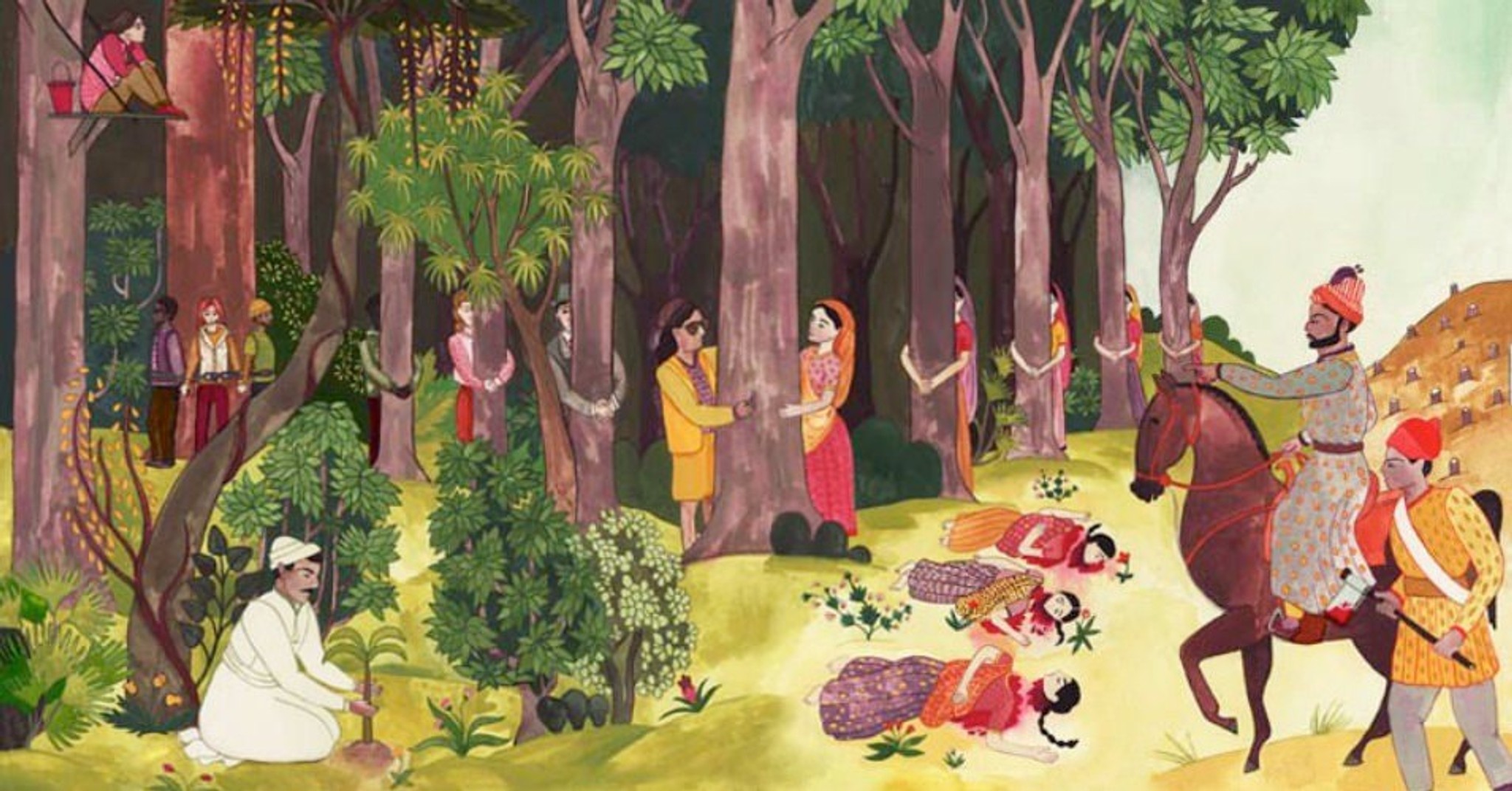
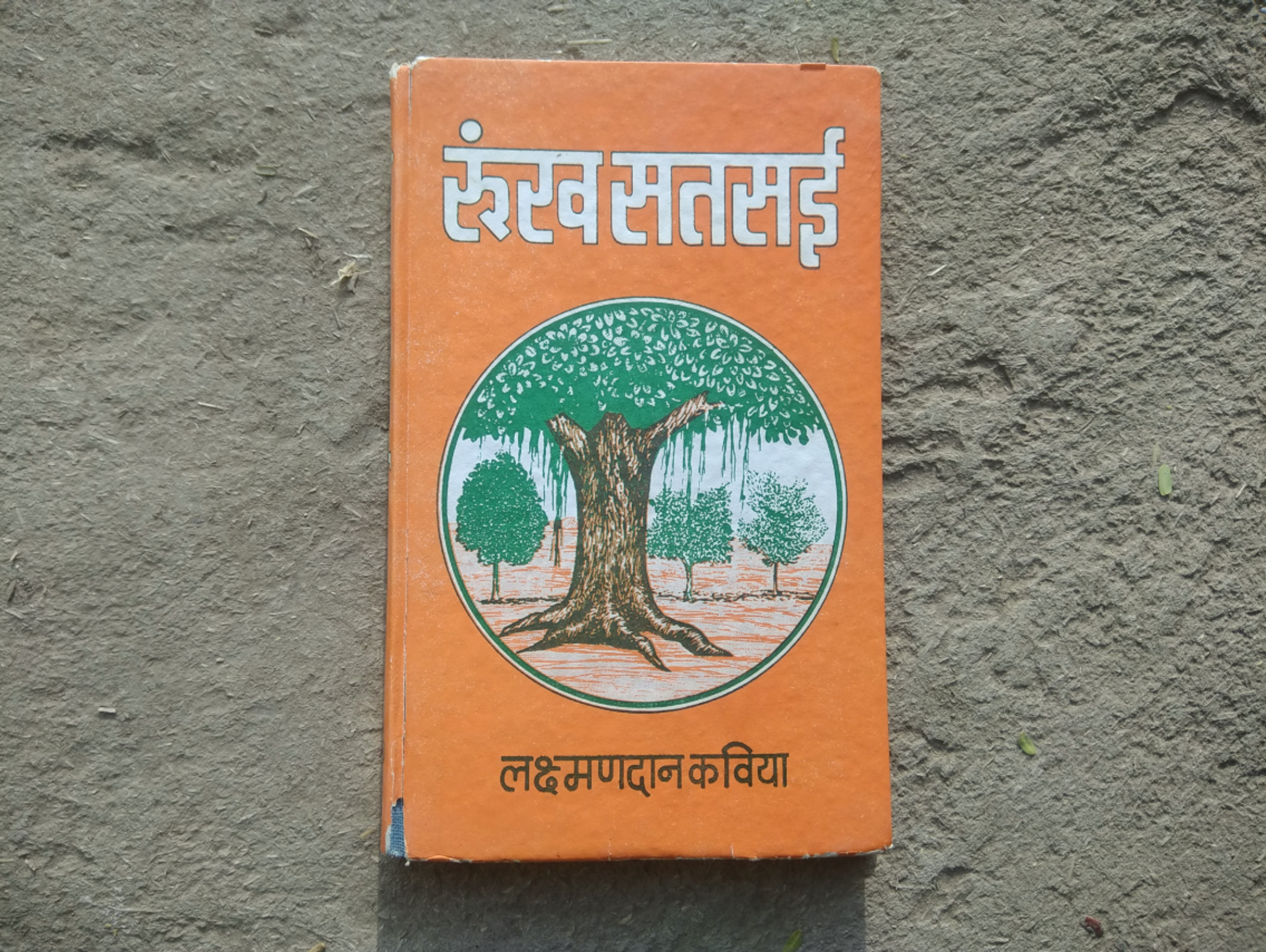
The Research
We found a book, called Runkh Satsai, in a school close to our land.
The book describes plantlife in Rajasthan, and its importance in relation to balanced environment and human welfare and health. The poet in Laxman Danji Kaviya has in a way enlivened the importance of plantation in the desolate desert where the surface is covered by wind-blown shifting sand dunes.






